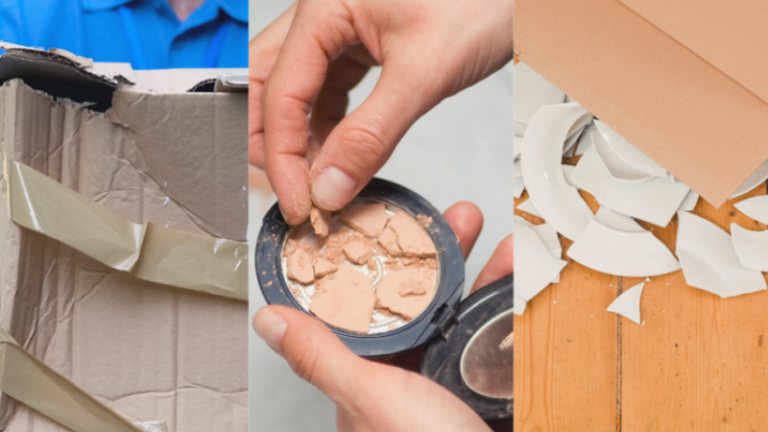Recently, Amazon published some guidelines to help sellers prevent product condition issues. Since the holiday shopping season is upon us, we wanted to take some time to review these updates and break down what they mean for Sellers.
Amazon states: “Product condition issues create a poor customer experience and can negatively impact your Account Health. By following Amazon’s Product authenticity and quality guidelines, Listing quality guidelines, and Condition guidelines, you can ensure that customers have a positive experience when shopping on Amazon.”
They are absolutely correct! Noticing negative customer experience trends and product condition abnormalities is not only good practice but crucial as we move into the busy shopping season. You can investigate these trends by looking at your customer messages, feedback, Voice of the Customer, and return reasons.
Let’s take a look at Amazon’s guide to addressing Product Condition Complaints:
Condition Issue
Amazon's Explanation
eGrowth's Breakdown
Scratches, scuffs, or other physical imperfections |
Scratches, scuffs, or other physical imperfections are not consistent with New condition guidelines and can lead customers to perceive an item as Used. Any products listed in New condition should have no scratches or scuffs. |
The most common cause of this issue type is shipping damage. By increasing your dunnage material and ensuring the packaging can endure transit with no damages, you can mitigate this complaint type. |
Items that are dirty, soiled, or contain hair, stains, odors, or other substances |
These issues indicate previous use and create a poor customer experience. Soiled, dirty, or heavily stained products are not permitted on Amazon under any listing condition. |
This issue is less common and more specific. If you run into any of these issues, make sure these substances are not getting into your packaging during the package, prep, and ship process. If your product has a factory or chemical odor that is a byproduct of manufacturing, state that in your bullet points or product description so your customers are not alarmed and are prepared for it prior to purchase. |
Previously opened product packaging |
A product package that has been previously opened indicates that a product is used or has been returned and resold. In order to meet New condition guidelines, products should arrive in their original, unopened packaging. |
This commonly occurs when FBA fulfillment centers take a returned item and place it back into sellable inventory. If you see this issue pop up and you are in the FBA program, try to circumvent this by requesting FBA returns to be sent back to you. |
Missing or broken seal or protective covering |
When customers receive items that have a broken seal or are missing a seal entirely, they may believe the item has been used or tampered with, especially in the case of consumable products and liquids, gels, or creams. A lack of seal can also lead to spilling, leakage, and other product issues.
Keep in mind that customers’ expectations and perceptions may be different for e-commerce items compared to items bought in a physical store. Seals for items purchased online help improve customer confidence in the product they receive.
A missing or broken seal or protective covering can be due to a low-quality adhesive, causing the seal to break or come off during shipping and/or prep. Be sure that the seals or protective coverings you use stick well and are not easily removed or broken without force. |
Wear and tear, signs of age, or damage |
These issues indicate previous use and create a poor customer experience. While signs of wear are acceptable for Used condition items, damaged or expired products are not permitted on Amazon under any listing condition. |
Like previous complaints, the common causes for this are due to shipping damage and/or FBA returns being placed back into inventory. A good practice to prevent this is to do quality checks and random inspections of your goods when they arrive (prior to being sold to customers). |
Missing parts |
Missing parts compromise the functionality of an item and may lead to complaints about the product being defective or used. Shipping an item that is missing essential material or parts is prohibited. |
This complaint type is often caused by manufacturing mistakes, inadequate packaging, and/or mishandled prepping. When performing inventory audits, check that all parts are included in the packaging. If you manufacture goods, have the factory perform an audit if you notice this complaint type popping up with a recent order. |
Item doesn’t work at all or doesn’t work as expected |
Customers expect products to work as described in the listing. If a product arrives and does not function, in whole or in part, this creates a poor experience for customers. |
This complaint type is very specific to the type of item you are selling. For example, if a skin care product promises to clear acne in two uses and it doesn’t, that is an issue. If a cleaning robot promises to clean your entire house in under 30 minutes but it actually takes 90, that is an issue.
The most common fix for this is adjusting your listing. Try not to make any promises or guarantees that you cannot live up to.
Wrong item, size, color, or style received |
Customers expect to receive the correct product in the correct size, color, or style they ordered. Shipping the wrong item or a different size, color, or style of a product without notifying the customer first creates a poor customer experience. |
Sometimes mistakes are made, especially when you are selling variations of a product. Ensure that your prep and packaging steps include cross-checking the contents of the order with that of the packing slip. This will help mitigate these types of complaints and is an important step if you sell a lot of variated items. |
Different language, country version, model, or edition |
Customers expect to receive the specific country version, language, edition, or model that they ordered. Shipping a different version of an item than advertised in the listing is prohibited. |
Like the above, be sure to confirm you are shipping the correct item to your customer. If you cannot guarantee specifics on an item, you need to reconsider listing it. |
Please note that this list is not exhaustive; your specific investigation and plan of attack should address your specific issue(s).
Amazon also listed good practices and investigation techniques to look into some of these issues, so be sure to take a look at what they had to say as well.
These are excellent practices which should be in place for every seller, especially during busier shopping seasons. By staying on top of your listings, checking your metrics, and monitoring each ASIN’s performance, you lower your chances of having an ASIN suspended by Amazon.




